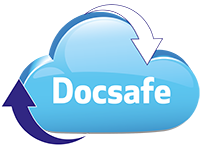An e-signature is used in any situation that is facilitated by an electronic device to create an agreement between two or more parties. Basically you sign digitally, using your device, instead of with a traditional pen. It is becoming more commonplace and an increasingly acceptable form of ‘sealing the deal’ in all sectors, from finance to leisure.
Whilst most professionals will think instantly of an online contract or financial document, it covers all sorts of scenarios – from you agreeing new T&Cs on your phone upgrade to deliveries being signed for on a hand-held device. E-signatures have been around for many years and whilst everyone understands their benefits (super quick, efficient and neat), not everyone understands their legality.
Wet signatures have the great advantage of being real in the sense that you can touch and see them being undertaken – whereas the e-signature exists in a world of IP addresses and actions taken between digital devices and more recently digital platforms. Of course an e-signature might raise eyebrows in sectors where technology isn’t front and centre but slowly these barriers are coming down.
It is useful to explain how an e-signature is actually more secure. Without getting bogged down in the technical detail, the devices and networks that you use to electronically sign are offering an immense ‘weight of evidence’ to back-up the simple question of exactly who signed exactly what. Weight of evidence is a legal term used to determine whether you did or didn’t sign a document. It is vital if the signature later becomes open to dispute. The heavier the weight of evidence, the more confident the court will be to side in favour of a signature having actually been undertaken.
For this reason you will be asked to identify yourself as you either login or start the process of e-signing. Furthermore, the software used will be tracking your actions from login to accessing the correct document to actually agreeing to sign the document. Some systems may even send you a final summary of your actions to cement the process and provide even more proof (and opportunity to disagree) with any actions you have agreed to by signing the document.
In reality, e-signatures offer far more weight of evidence that wet, ‘real world’ signatures can.
FAQs
My clients are always on the move so can they sign on a mobile phone? E-signatures can be used on most mobile phones and smart devices.All you really need is access to a functioning web browser.
Can I get a client to sign multiple times on different pages of a document? The best solutions allow you to sign the same document in any number of places as well as options to agree terms and conditions via separate tick boxes.
Can I get different people to sign the same document? Yes, multiple parties will be able to sign the same document. The very best software, often using portals, will allow the same master document to be signed rather than having to send separate copies to each person for signing. Those systems that use a master structure are client-based models whereas those rather require separate uploads for each signatory are called user-based models.
Can I get a husband and wife to sign the same document even if they use the same email address? Yes but ideally the greatest weight of evidence is when each signatory can be identified using their own email address. The husband and wife would be required to login using the same email but sign separately with each of their names.
Can I countersign a document in the same way as my client can? Yes, some packages offer you the ability to sign the same document as the client signs. You, as the originator, can name yourself on the document and once the client has finished signing it will prompt you to countersign before completing the process. Furthermore, the best systems also allow any number of clients and countersignatures on the same document. I even once came across as many 50 or 60 on the same large reporting document.
Are e-signatures accepted by everyone? E-signatures are legally no different to wet signatures in their own right but historically some people prefer a traditional wet signature – for no other reason than it is more traditional and therefore potentially more comfortable. This is changing across every professional sector.

